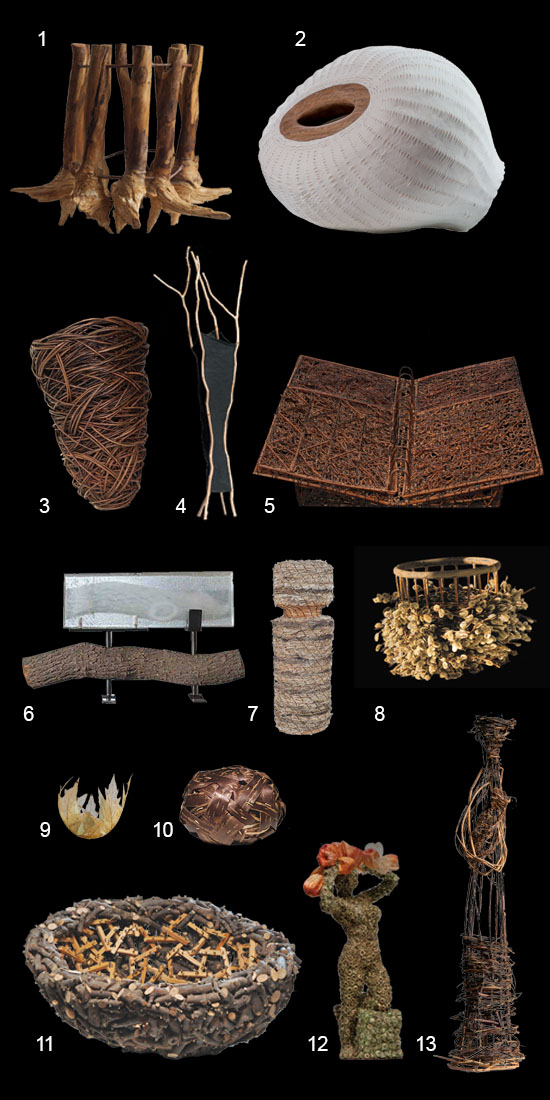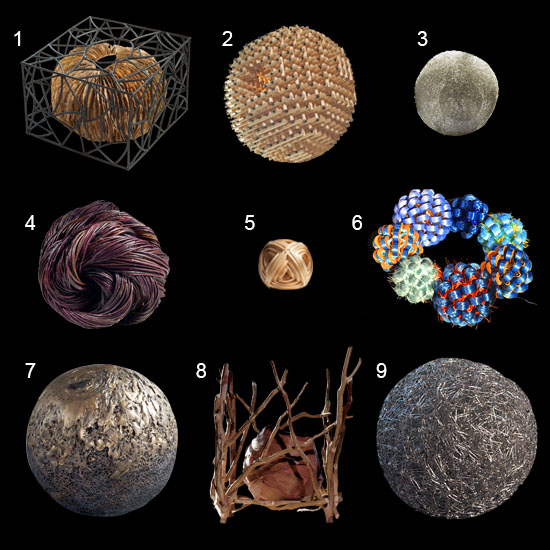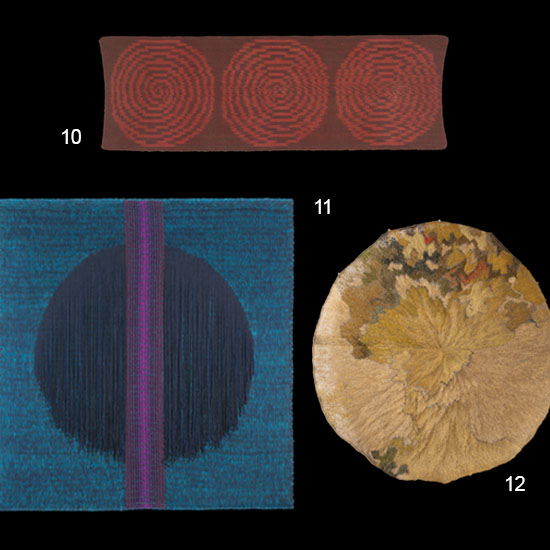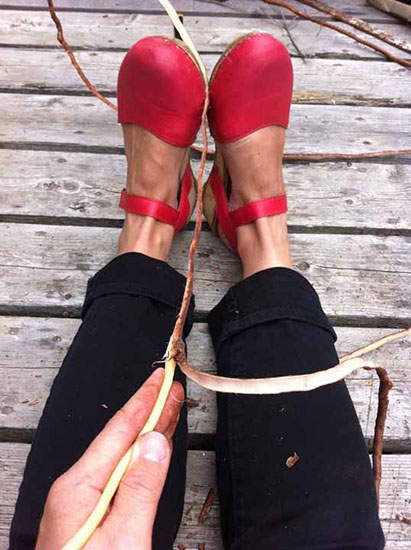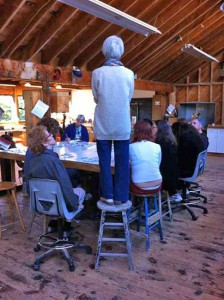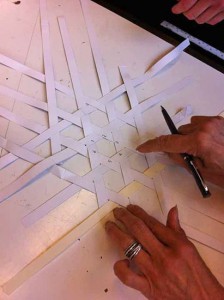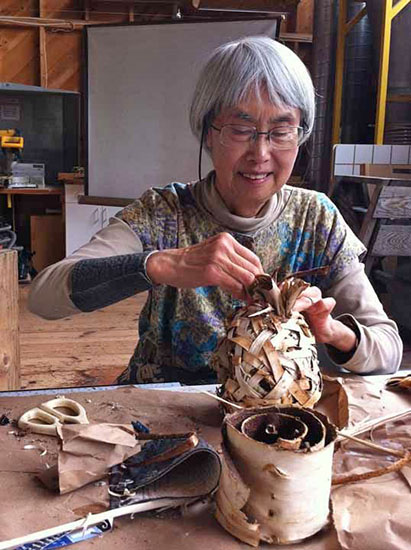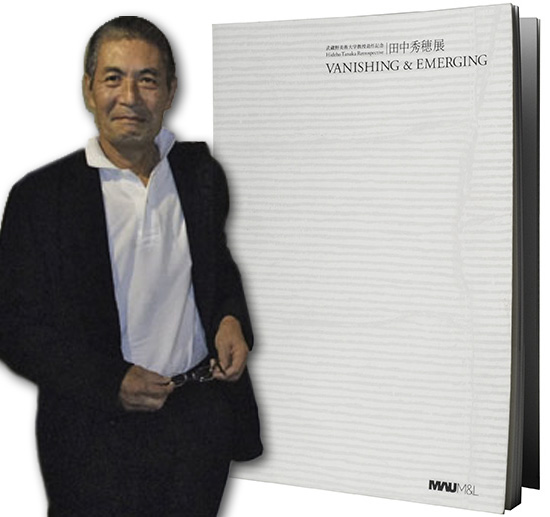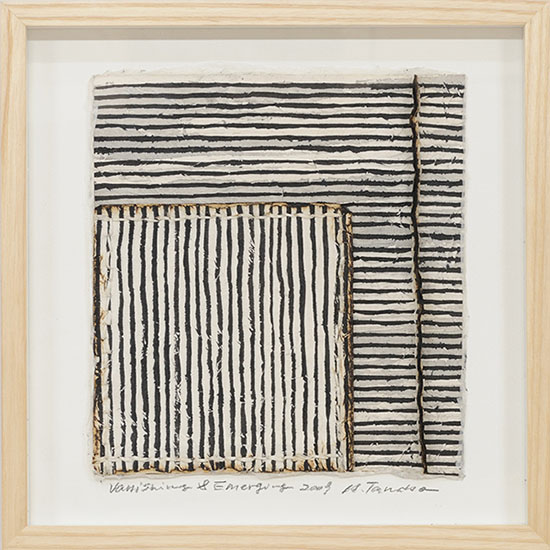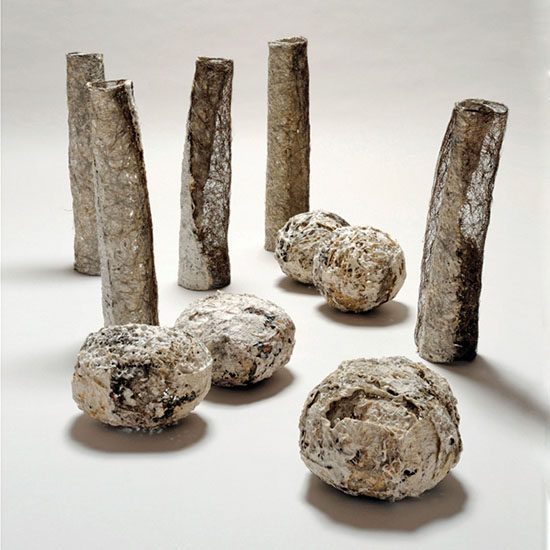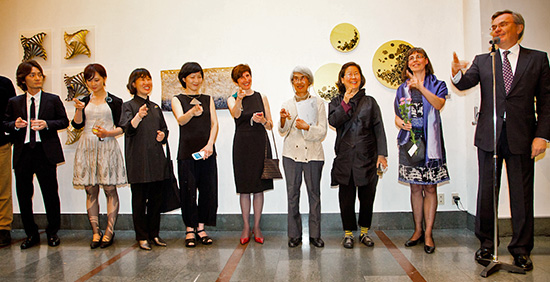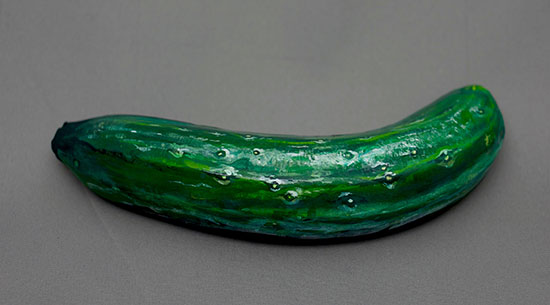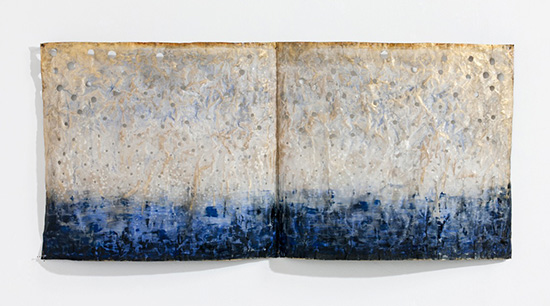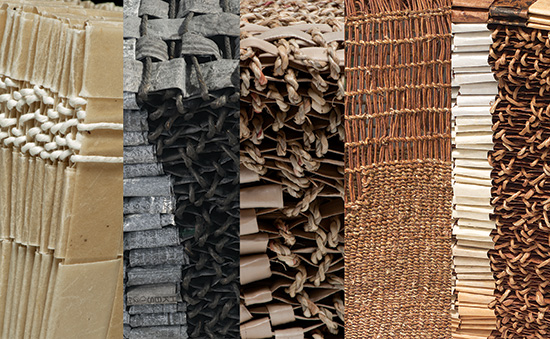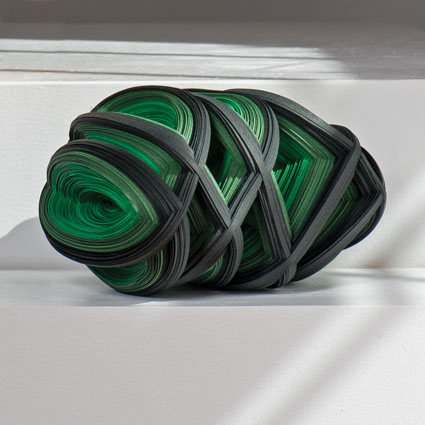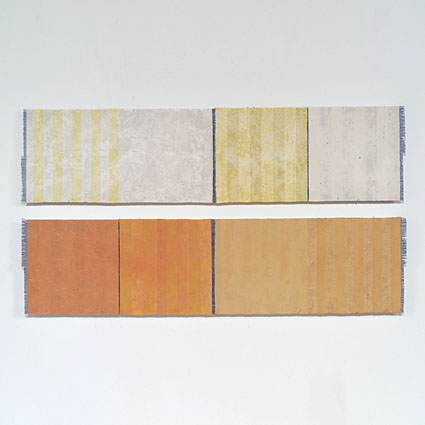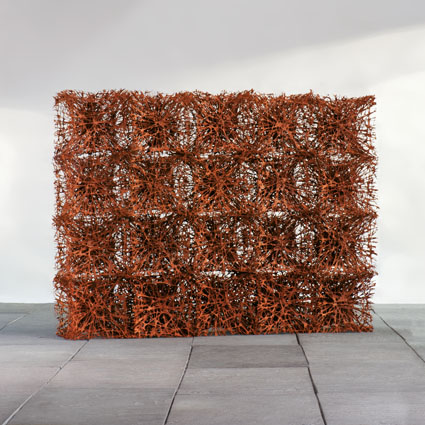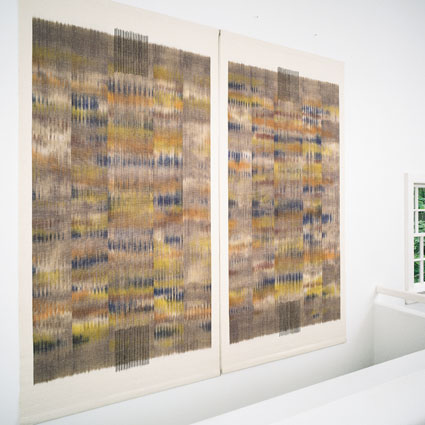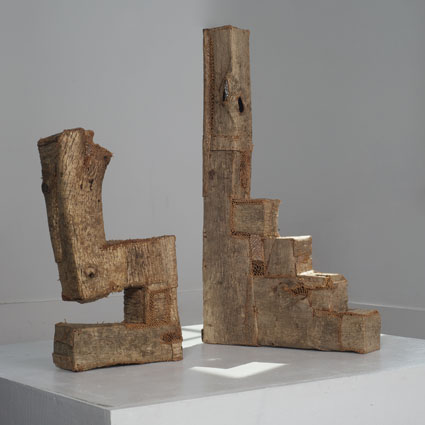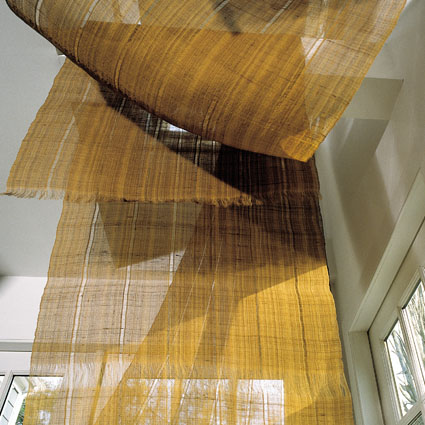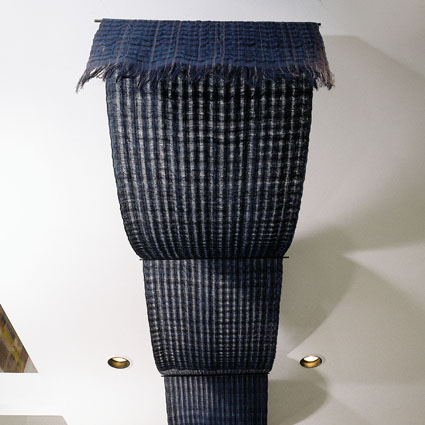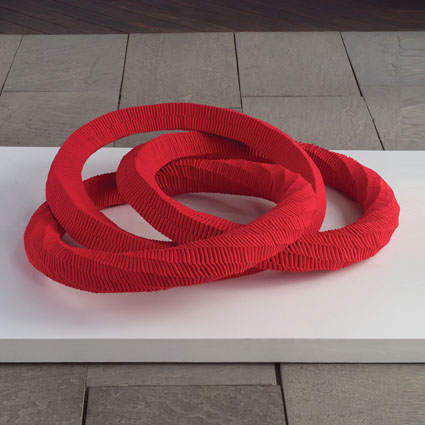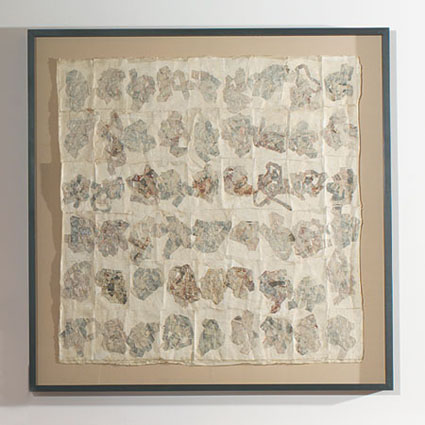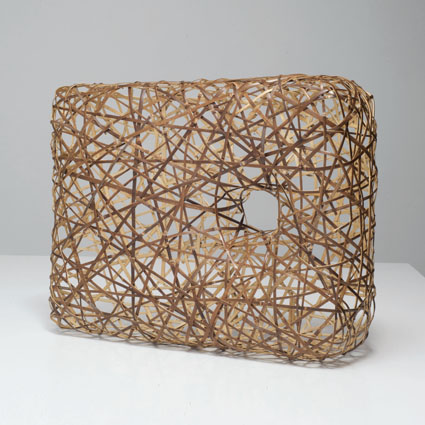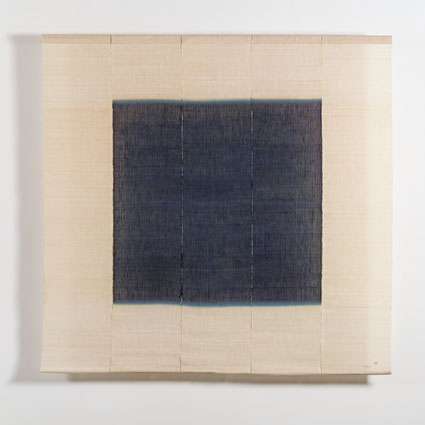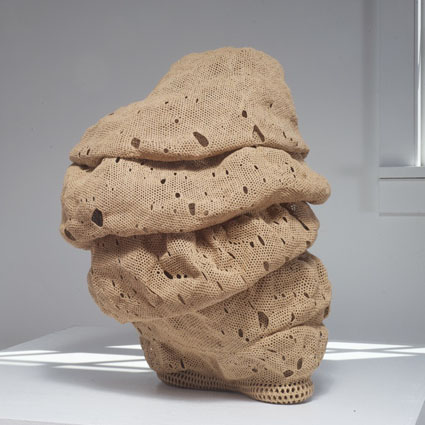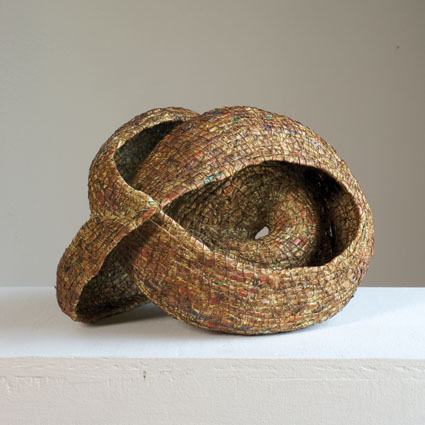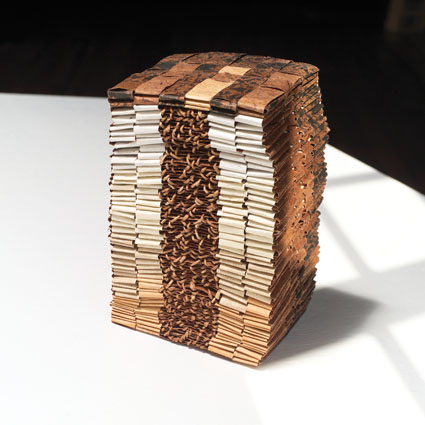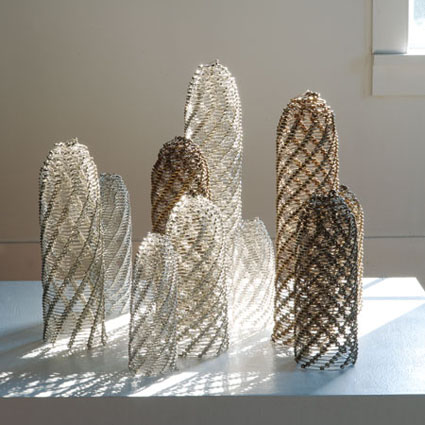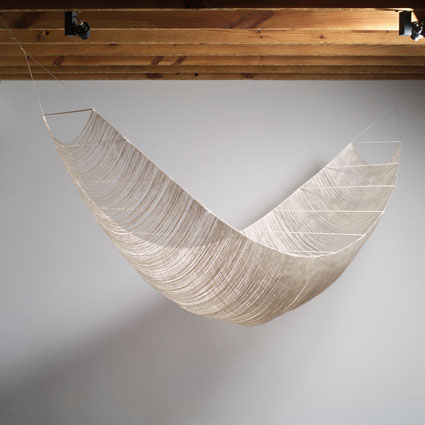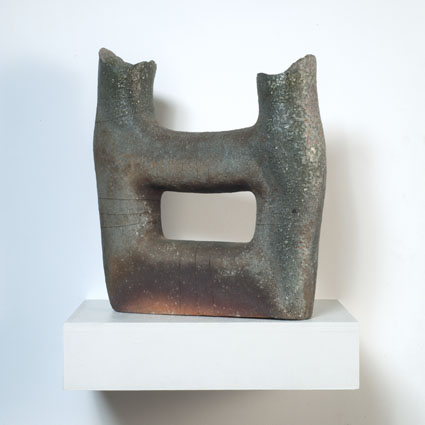Choose among baskets, sculptures and wall works of natural materials including wood bark, cockle burrs, leaves and feathers.
1) HAYSTACK RIVER BASKET, Dorothy Gill Barnes
early river teeth, 14.5″ x 21″ x 16″, 2011
2) PANIER-MAISON II, Stéphanie Jacques
wood, willow, raw clay coated and limewash, 16.5″ x 21.25″ x 21.25″, 2010
3) MARAG, Lizzie Farey
willow, wax and galloway pebble, 16.5″ x 11.5″ x 11.5″, 2006
4) GUARDIAN II, Jan Buckman
waxed linen and hawthorne branches, 27″ x 7.5″ x 7″, 2002
5) BIRD BRAIN, John Mcqueen
woven willow twigs, waxed string , 26″ x 23.5″ x 23″, 2002
6) CAMPHOR, Lawrence LaBianca
glass with photo, branch, steel, 12″ x 22″ x 7″, 1999
7) EMU, Virginia Kaiser
pine needles, Emu feathers, stitched with linen, 14″ x 5″ x 5″, 2011
8) PUSSY WILLOW XIIII, Markku Kosonen
willow, 8″ x 12″ x 12″, 1996
9) LEAF BOWL, Kay Sekimachi
skeleton of big leaf maple, 8″ x 5″ x 5″, 2011
10) FITTINGS V, Hisako Sekijima
cherry and maple, 8″ x 10″ x 9″, 1999
11) CRADLE TO CRADLE, Gyöngy Laky
apple, commercial wood, screws, 16 x 30″ x 30″, 2007
12) CHINESE LANTERN, Ceca Georgieva
burdock burrs, chinese lantern, 16” x 8.25” x 4.75”, 2012
13) MOTHER & CHILD, Dawn MacNutt
twined willow, 36″ x 9″ x 9″, 2009, $3,000
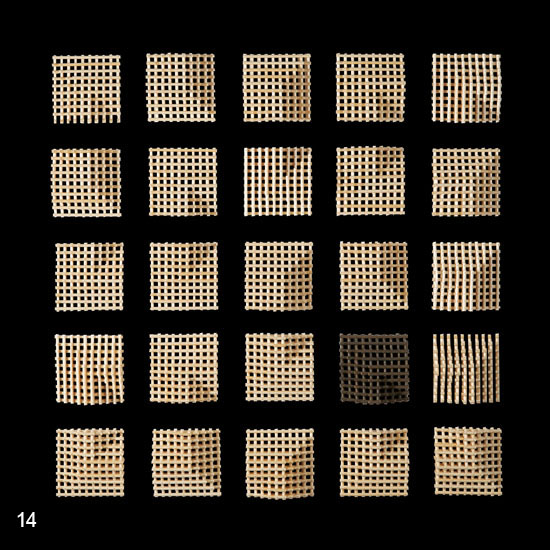 14) TWENTY -FIVE SQUARES, Dail Behennah
14) TWENTY -FIVE SQUARES, Dail Behennah
willow silver plated pins, 37.5″ x 37.5″ x 3″, 2007

